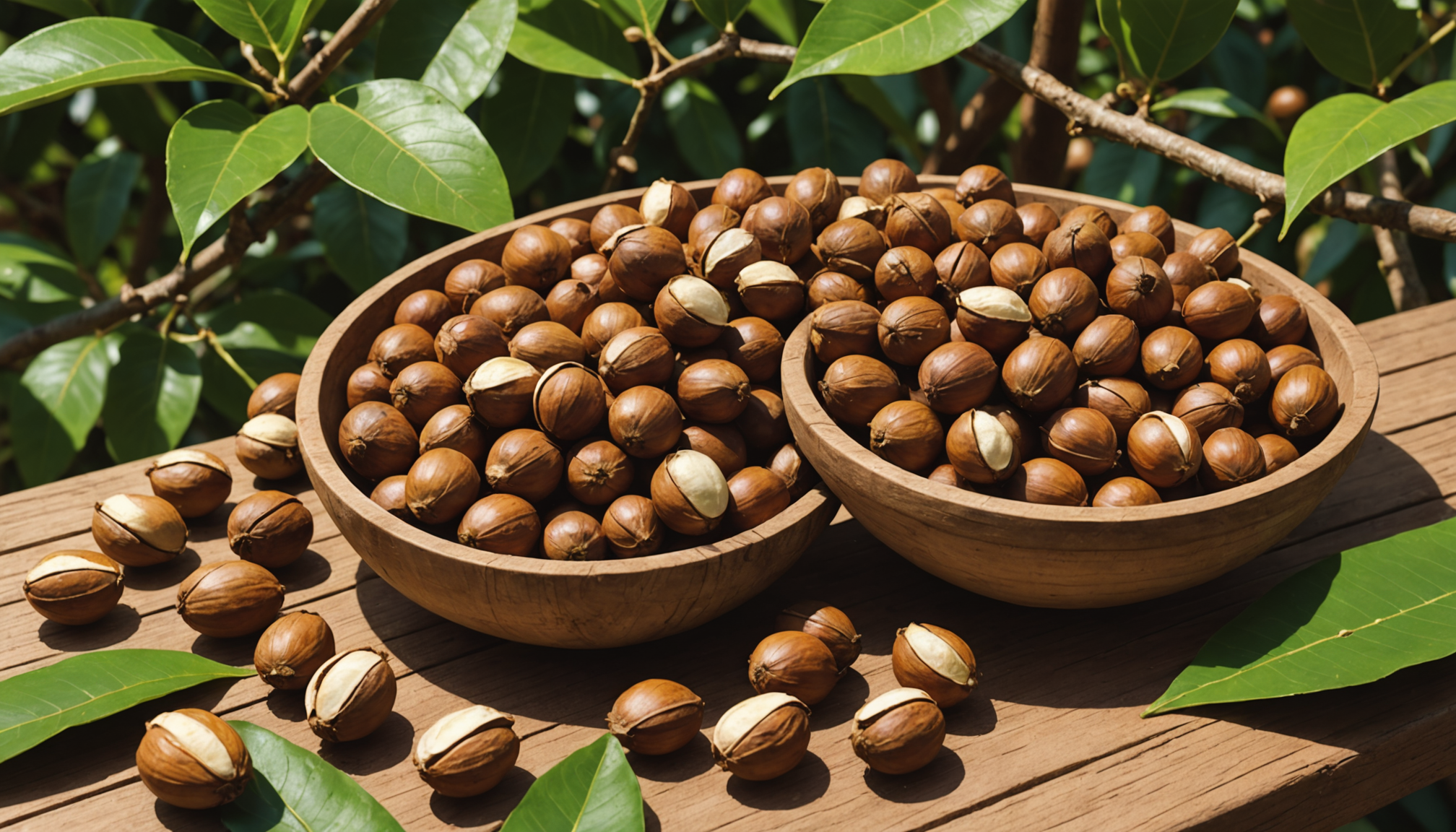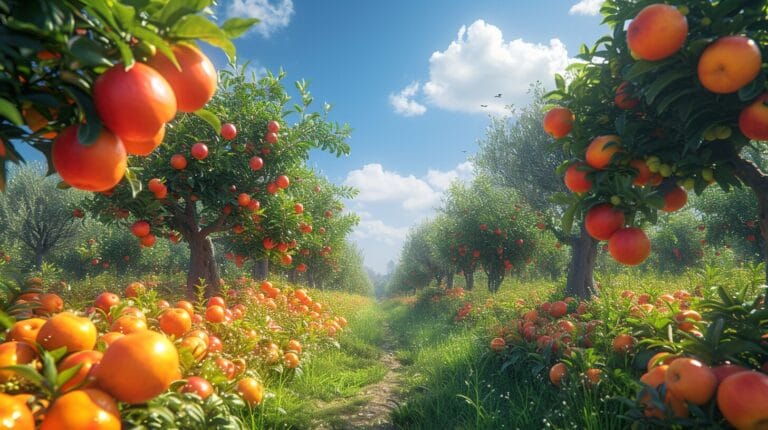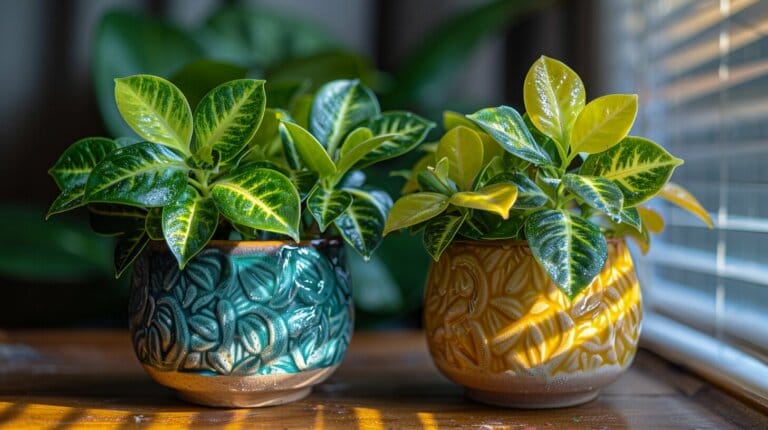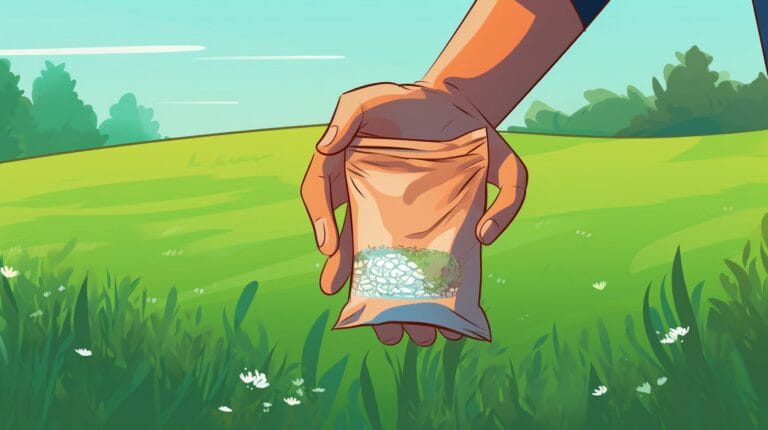Have you ever dreamed of growing your own tropical nut tree? Learning how to plant macadamia nuts is a fantastic way to bring a piece of paradise right to your backyard! Not only are macadamia nuts delicious and packed with nutrients, but growing your own trees can be a fun adventure, whether you’re a gardening newbie or a seasoned pro. Imagine harvesting fresh, sweet nuts and sharing them with friends and family!
It’s essential to know the steps for successful planting and care. Without proper techniques, your trees might not thrive or produce the tasty nuts you’re hoping for. In this guide, we’ll dive into the fascinating world of macadamia trees! You’ll discover how to prepare the nuts for germination, the best conditions for planting, and how to care for your growing trees. Get ready to embark on this exciting journey of growing macadamia nuts!
How to Plant Macadamia Nuts: Essential Guide for Beginners
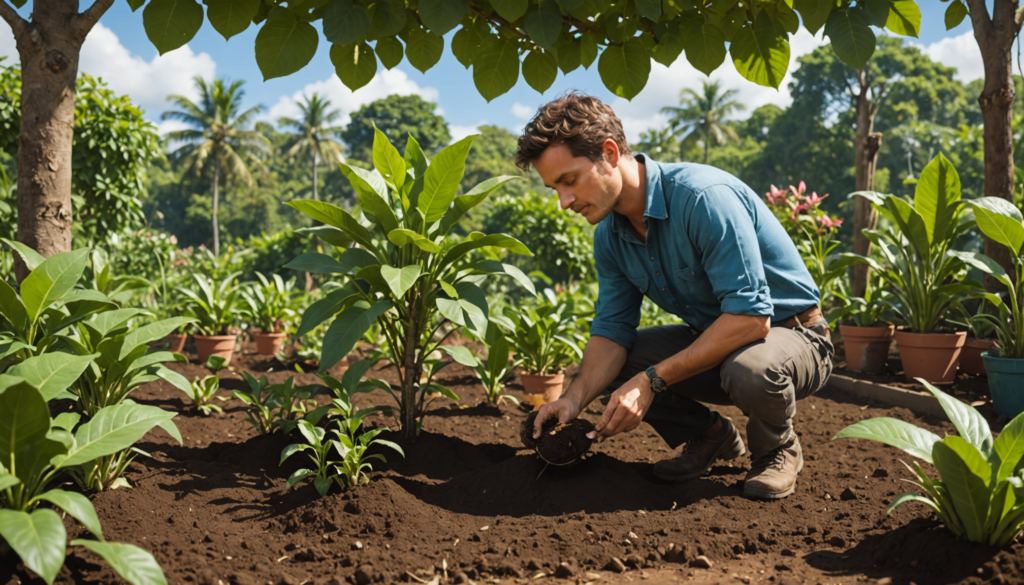
Selecting Quality Macadamia Nut Seed for Successful Germination
Macadamia nuts are native to Australia and are known for their rich, buttery flavor and high-fat content (WedMD). To ensure successful germination, soak the nuts in water for 24 hours before planting them in well-draining soil (Greg). It is best to select fresh, high-quality nuts from a reputable source to increase the chances of successful growth. Look for nuts with intact shells, as damaged or broken shells may indicate poor quality and lower germination rates.
Step-by-Step Planting Process for Macadamia Tree Success
- Direct Sowing vs. Starting Macadamia Seeds Indoors: You can either sow them directly in the garden or start them indoors in pots. Starting indoors can give them a head start in a controlled environment, especially in cooler climates where outdoor conditions may not be ideal. If starting indoors, use seed trays with drainage holes and provide adequate light to encourage healthy seedling development.
- When to Transplant Macadamia Seedlings to Your Garden: Transplant seedlings when they are about 6 inches tall and have several leaves, typically in spring after the last frost. Ensure that the soil temperature is warm enough to promote healthy root growth during transplanting; ideally, soil temperatures should be at least 65°F (18°C) for optimal results.
- Selecting the Best Garden Location for Growing Macadamia: Choose a sunny location with well-drained soil, as macadamia trees prefer sandy, loamy soils and need plenty of sunlight. Avoid areas prone to waterlogging or frost, as these conditions can harm young trees. Additionally, consider wind protection, as strong winds can damage young saplings and affect their growth.
Common Mistakes to Avoid When Planting Macadamia in Your Garden
Avoid overwatering, as macadamia trees are sensitive to root rot. Ensure that the soil is well-draining and monitor moisture levels carefully; using mulch around the base can help retain moisture without causing water buildup. Additionally, avoid planting too closely together; macadamia trees need ample space for air circulation and growth, so allow sufficient distance between each tree.
Understanding Macadamia Tree Varieties and Cultivar Selection
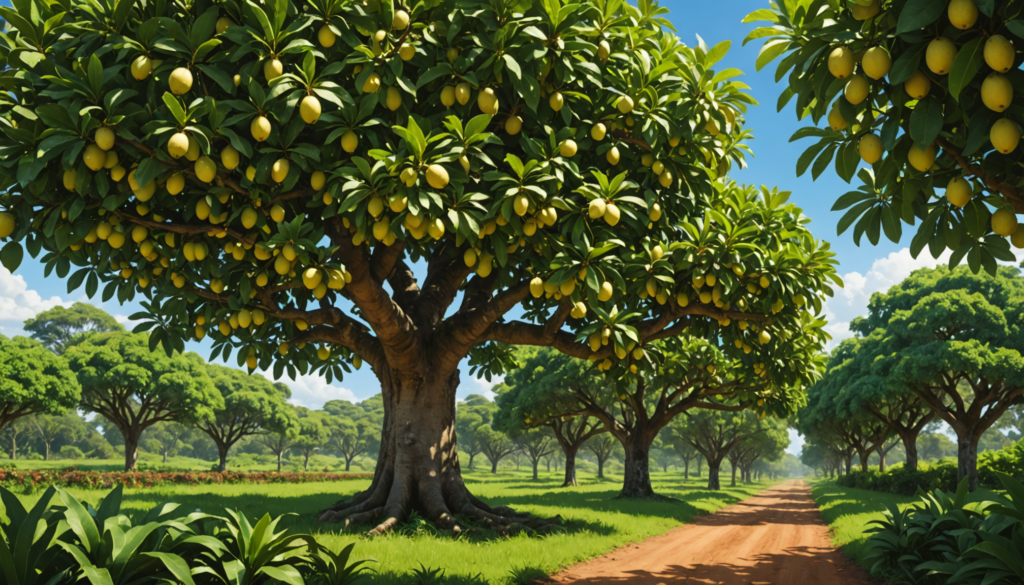
Comparing the Four Species of Macadamia for Home Gardeners
There are several species of macadamia, but the most commonly cultivated are Macadamia integrifolia and Macadamia tetraphylla (Science Direct, Britannica). Both varieties can thrive in home gardens but may have different growth habits, nut sizes, and flavor profiles, making it essential to choose a variety that suits your preferences and local climate. For example, M. integrifolia is often favored for its high-quality nuts, while M. tetraphylla is more resilient to cold temperatures.
Top-Performing Macadamia Cultivar Options for Different Climates
Select cultivars based on your local climate; for example, some varieties are more drought-resistant, while others may require more consistent moisture. Researching local success stories can also provide insight into which cultivars perform best in your area. Consider factors such as disease resistance and adaptability to soil types when making your selection.
How to Choose the Right Macadamia Nut Trees for Your Location
Consider your local climate, soil type, and available space when selecting macadamia nut trees. Research local agricultural extensions for recommendations on suitable cultivars that are adapted to your specific growing conditions. Additionally, consult with local growers or gardening clubs to gain firsthand knowledge of successful planting techniques and challenges specific to your region.
Essential Macadamia Tree Care for Optimal Growth
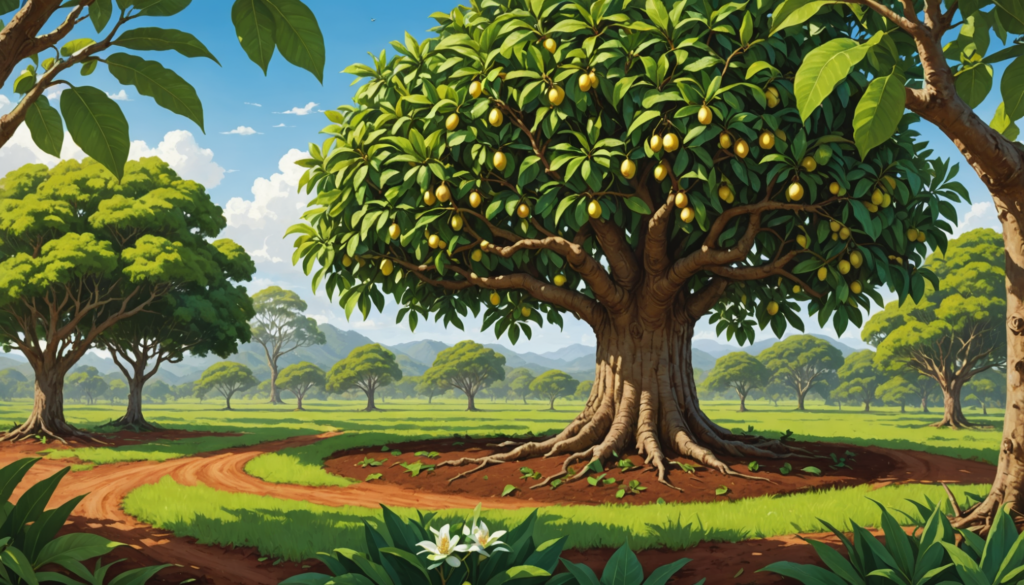
Watering and Fertilizing Requirements for Healthy Macadamia Trees
Macadamia trees require regular watering, especially in the early years. Fertilize with a balanced fertilizer during the growing season to support healthy growth, and consider doing soil tests to tailor nutrient applications based on specific deficiencies. Young trees benefit from consistent moisture to establish strong root systems, while mature trees can tolerate brief dry periods but still perform best with regular irrigation.
How to Prune Macadamia Trees for Better Production
Pruning macadamia trees during the dormant season helps remove dead or crossing branches and encourages improved air circulation and light penetration. Regular pruning also shapes the tree, promoting better nut production in future seasons. Aim to prune during late winter or early spring before new growth begins for optimal results.
Identifying and Managing Common Pest Problems in Macadamia
Monitor for pests such as the macadamia nut borer and aphids. Implement integrated pest management strategies to control infestations effectively, including introducing beneficial insects like ladybugs that prey on harmful pests. Regularly inspect your trees for signs of infestation and take action promptly to prevent damage.
From Flower to Fruit: Macadamia Nut Development Process

Understanding the Growth Cycle of Macadamia Nut Trees
Macadamia trees typically take 5-7 years to begin producing nuts after planting (My Garden). They go through stages of germination, seedling, juvenile growth, and then maturity, where they can produce nuts for several decades if properly cared for. Understanding these stages helps gardeners provide appropriate care at each point in the tree’s life cycle.
Pollination Requirements for Successful Macadamia Fruit Set
Macadamia trees benefit from cross-pollination, so planting multiple trees can enhance yields significantly. Encouraging natural pollinators like bees by planting flowering plants nearby can improve pollination success rates. Consider selecting varieties that bloom at slightly different times to maximize cross-pollination opportunities.
Factors Affecting Macadamia Yield in Home Gardens
Environmental factors such as soil quality, moisture levels, and pest management practices can significantly influence nut production. Additionally, seasonal weather patterns can affect flowering and fruit set, so staying informed about local climate conditions is essential. Regularly observing tree health and growth patterns will help you identify any potential issues early on.
Macadamia Nut Harvesting and Post-Harvest Handling
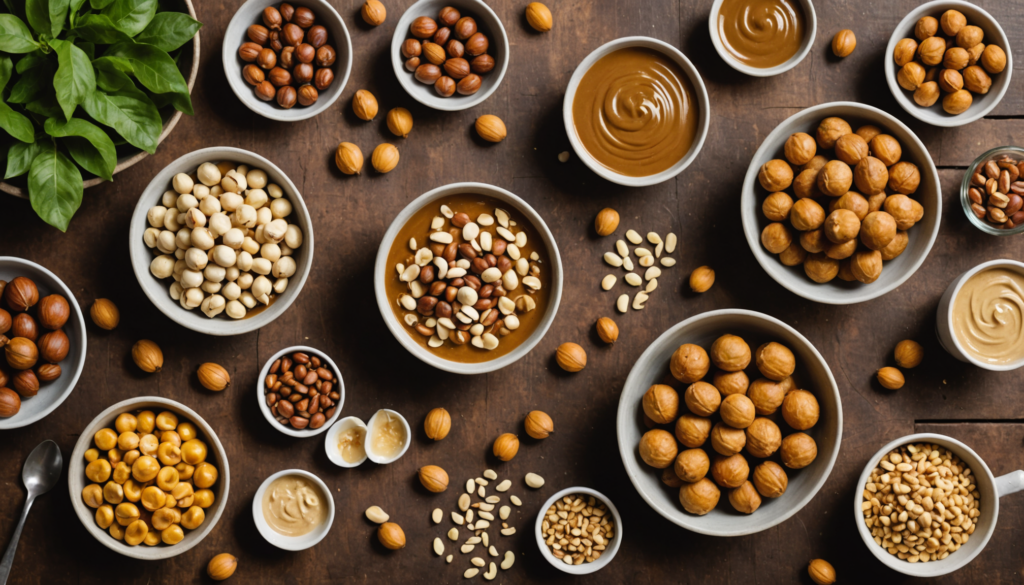
How to Determine When Your Macadamia Nuts Are Ready for Harvest
Nuts are ready when they fall from the tree naturally or when their outer husks begin to turn brown and split. It’s important to harvest promptly to avoid loss due to pests or adverse weather conditions that could damage the crop. Monitoring your trees closely during the harvest season will help you catch nuts at their peak ripeness.
Proper Techniques for Macadamia Nut Harvesting
Hand harvesting is common for smaller orchards; however, mechanical harvesters may be used for larger operations. Ensure that harvested nuts are handled gently to prevent bruising and maintain quality. If harvesting by hand, use a gentle twisting motion to remove nuts without damaging the branches.
Processing and Storing Home-Grown Macadamia Nuts
After harvesting, dry the nuts thoroughly before storing them in airtight containers to maintain freshness. Properly dried nuts can be stored at room temperature for several months or frozen for longer-term storage. Consider labeling containers with dates to keep track of freshness.
Conclusion
Growing macadamia nuts requires patience and care, but the rewards of enjoying your own homegrown nuts can be significant. With proper planning and attention to detail, gardeners can establish healthy trees that produce delicious nuts for years to come.
FAQs
1. How long does it take for a macadamia tree to bear fruit?
Typically 5-7 years after planting; however, optimal yields may not be reached until the trees are fully mature at around 10 years.
2. Can I grow macadamia nuts in pots?
Yes, but ensure the pot is large enough and has good drainage to accommodate the tree’s root system as it grows.
3. What are the ideal soil conditions for growing macadamia trees?
Macadamia trees thrive in well-drained, sandy loam soils with a slightly acidic to neutral pH (around 6-7). Proper drainage is crucial to prevent root rot.
4. How should I care for my macadamia trees during their first few years?
During the first few years, regular watering is essential to establish strong root systems. Fertilization with a balanced fertilizer during the growing season will also support healthy growth and nut production.

